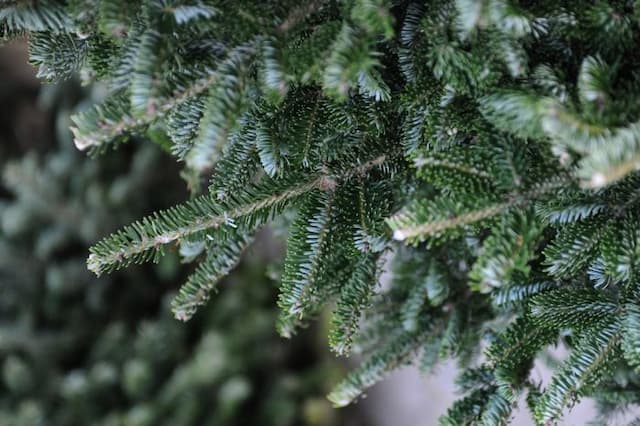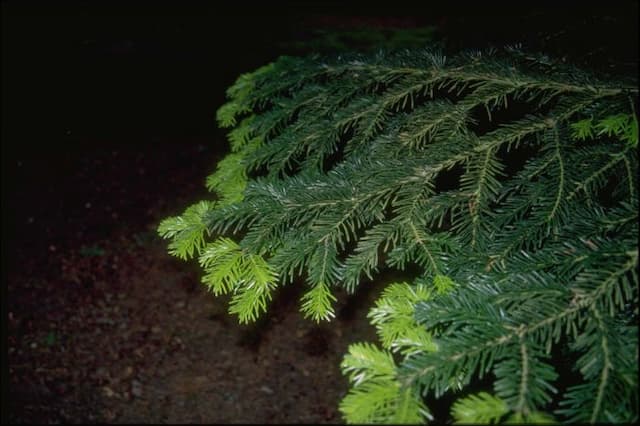Cyprus Cedar Cedrus brevifolia

ABOUT
The plant in question, commonly known as the Cyprus cedar, is characterized by its evergreen foliage and a pyramidal shape that often becomes more umbrella-like with age. The needles, which are the leaves of the Cyprus cedar, are generally short, thick, arranged spirally on the twigs, and can be found in an attractive blue-green hue that adds to the overall aesthetic appeal of the tree. These needles are gathered in dense clusters, giving the branches a somewhat bristly look. Along with the foliage, this cedar produces cones that are barrel-shaped, initially green but maturing to a grey-brown color, which adds a textural contrast to the soft needles. The cones are quite distinctive, and they stand upright on the branches, unlike those of many trees which hang down. The bark of the Cyprus cedar is deeply fissured and has a rugged appearance. Over time, it takes on a grayish-brown color which peels off in strips, revealing a redder underneath, which is quite striking. Lastly, the tree has a strong and sturdy trunk that supports its wide-spreading, horizontally arranged branches, giving it a regal and majestic presence.
About this plant
 Names
NamesFamily
Pinaceae.
Synonyms
Cyprus Cedar, Cyprian Cedar, Troodos Cedar.
Common names
Cedrus libani subsp. brevifolia, Cedrus libani var. brevifolia.
 Toxicity
ToxicityTo humans
Cedrus brevifolia, commonly known as the Cyprus cedar, is not generally considered toxic to humans. There is no common documentation of poisoning from ingestion or other forms of contact with this plant for humans. Hence, touching or ingesting parts of this plant typically does not result in toxic consequences for humans.
To pets
Cyprus cedar (Cedrus brevifolia) is also not known to be toxic to pets. It is not reported to cause poisoning if pets come into contact with or ingest parts of this tree. As such, there are no common symptoms of poisoning associated with this plant for pets. However, eating non-food items can cause gastrointestinal upset in pets, so it is generally advisable to prevent them from ingesting plant material.
 Characteristics
CharacteristicsLife cycle
Perennials
Foliage type
Evergreen
Color of leaves
Green
Height
30 feet (9 meters)
Spread
20 feet (6 meters)
Plant type
Tree
Hardiness zones
7
Native area
Cyprus
Benefits
 General Benefits
General Benefits- Ecological Support: Cedrus brevifolia, commonly known as Cyprus cedar, provides habitat and protection for various wildlife species.
- Ornamental Value: With its distinctive silhouette and evergreen foliage, the Cyprus cedar adds aesthetic appeal to landscapes and gardens.
- Soil Stabilization: The root system of Cyprus cedar helps prevent soil erosion, particularly on slopes and in areas prone to land degradation.
- Shade Provider: Its canopy offers shade, creating cooler microclimates beneficial to understorey plants and as a relief in hot weather for people and animals.
- Wood Production: Cyprus cedar yields valuable timber that is durable and resistant to decay, used in construction and carpentry.
- Cultural Significance: The tree has historical and cultural importance in various regions, often symbolizing strength and endurance.
- Climate Resilience: Being adapted to its native mountainous environment, Cyprus cedar is resistant to drought and can help in reforestation efforts to combat climate change.
 Medical Properties
Medical PropertiesThis plant is not used for medical purposes.
 Air-purifying Qualities
Air-purifying QualitiesThis plant is not specifically known for air purifying qualities.
 Other Uses
Other Uses- Cedrus brevifolia, commonly known as Cyprus cedar, can be used to create habitats for wildlife, offering shelter and breeding spaces for various bird species and small mammals.
- The wood of the Cyprus cedar is aromatic and resistant to decay, hence it is often used for crafting durable furniture and landscaping elements.
- The fine-grained wood of Cyprus cedar can be utilized in the making of musical instruments, such as soundboards for pianos and bodies for guitars, due to its tonal qualities.
- Cedarwood oil extracted from Cyprus cedar can serve as a natural insect repellent, ideal for creating organic pest control solutions.
- The resin from Cyprus cedar trees may be collected and used as a component in varnishes and adhesives due to its sticky nature and binding properties.
- Due to its slow growth and dense foliage, Cyprus cedar is suitable for use as a privacy screen or windbreak in landscaping designs.
- The wood shavings and sawdust from Cyprus cedar can be repurposed as a natural ground cover or mulch for gardening, helping to retain soil moisture and control weeds.
- Artists and craftsmen may use the aromatic cedar wood shavings as a material for creating fragrant and aesthetically pleasing potpourri blends.
- Cyprus cedar can be grown as bonsai, making it an interesting and challenging plant for enthusiasts who appreciate its unique characteristics and slow-growing habit.
- In some cultures, the wood of Cyprus cedar is used in traditional ceremonies and rituals due to its significant symbolic meaning and pleasant scent.
Interesting Facts
 Feng Shui
Feng ShuiThe Cedar of Cyprus is not used in Feng Shui practice.
 Zodiac Sign Compitability
Zodiac Sign CompitabilityThe Cedar of Cyprus is not used in astrology practice.
 Plant Symbolism
Plant Symbolism- Endurance: Cedrus brevifolia, commonly known as the Cyprus cedar, is native to the high altitude of the Troodos Mountains, symbolizing its ability to withstand harsh conditions and signify resilience.
- Immortality: Cedars are evergreen, meaning they maintain their foliage year-round. This evergreen trait symbolizes eternal life or immortality.
- Purity: The cedar tree is often associated with purity due to its aromatic and clean-smelling wood, which is believed to repel insects and decay.
- Protection: Cedar wood has been historically used to build temples and palaces, signifying the tree's role as a protector and guardian.
- Spiritual Significance: The Cyprus cedar, like other cedar species, holds spiritual significance in many cultures, representing elevated consciousness and a connection to higher spiritual realms.
 Water
WaterThe Cyprus cedar requires moderate watering, and it's essential to avoid over-watering. During the growing season in spring and summer, water thoroughly once a week, providing about 1 to 1.5 gallons for each inch of trunk diameter at breast height. In fall, reduce watering to every two weeks, and in winter, water only if the soil is very dry. The method of watering should be slow and deep, allowing moisture to reach the roots. Adjust the amount of water depending on rainfall and soil drainage.
 Light
LightCyprus cedars thrive in full sun exposure, meaning they require at least six hours of direct sunlight daily. The best spot for Cyprus cedar is an area with unobstructed access to sunlight, away from taller structures and trees that might create significant shade.
 Temperature
TemperatureCyprus cedars prefer temperate conditions and can tolerate a range in temperature. They can survive minimum temperatures down to about 20°F and can handle maximum temperatures well above 100°F. Ideally, they flourish in temperatures between 40°F and 80°F.
 Pruning
PruningPrune Cyprus cedars to remove dead or damaged branches, to shape the tree, and to promote healthy growth. The best time to prune is during late winter or early spring before new growth begins. Prune as needed, typically once per year, to maintain the desired shape and health of the tree.
 Cleaning
CleaningNot needed
 Soil
SoilThe Cyprus cedar (Cedrus brevifolia) thrives in well-draining soil with a pH range of 6.0 to 8.0. An ideal soil mix could be a combination of loam, sand, and compost to ensure good drainage and fertility. Adjustments can be made with lime or sulfur to maintain the desired pH.
 Repotting
RepottingCyprus cedars should generally be repotted every two to three years to prevent root binding and to replenish soil nutrients. Younger trees may require more frequent repotting whereas mature trees can be repotted less often.
 Humidity & Misting
Humidity & MistingCyprus cedars prefer moderate to low humidity levels; they are well-suited to the naturally dry conditions of their native Mediterranean environment and do not require high humidity to thrive.
 Suitable locations
Suitable locationsIndoor
Provide full sun, well-draining soil, and room for growth.
Outdoor
Plant in full sun, with well-draining soil; protect from high winds.
Hardiness zone
7-9 USDA
 Life cycle
Life cycleThe life of the Cyprus cedar (Cedrus brevifolia) begins with seed germination which is facilitated by warm temperatures and sufficient moisture. Seedlings emerge and grow into young saplings, which over the years develop a deep root system and a strong, straight trunk. The plant enters a long juvenile phase where it experiences vegetative growth, establishing a conical crown with dense, evergreen needle-like leaves. After reaching maturity at about 20 to 40 years, Cyprus cedars begin their reproductive phase, producing male and female cones on the same tree; the male cones release pollen which fertilizes the female cones. Once pollinated, the female cones develop seeds over a couple of years before they mature and are released, completing the reproductive cycle. The Cyprus cedar can live for several centuries, during which it can go through multiple reproductive cycles, contributing to the growth of cedar forests.
 Propogation
PropogationPropogation time
Spring to Autumn
Propogation: Cedrus brevifolia, commonly known as Cyprus cedar, is typically propagated through seed sowing. The best time to do this is in autumn. Seed propagation starts with the collection of cones, which should be allowed to dry so they release their seeds. Once extracted, the seeds are ideally stratified for a period of one to two months at temperatures around 40 degrees Fahrenheit (4 degrees Celsius) to break dormancy and enhance germination. After stratification, the seeds can be sown in well-draining soil and kept at a constant temperature of about 65 to 70 degrees Fahrenheit (18 to 21 degrees Celsius). Seedlings require careful attention as they develop, including protection from extreme conditions and regular watering, until they are strong enough to be transplanted to their final location.








